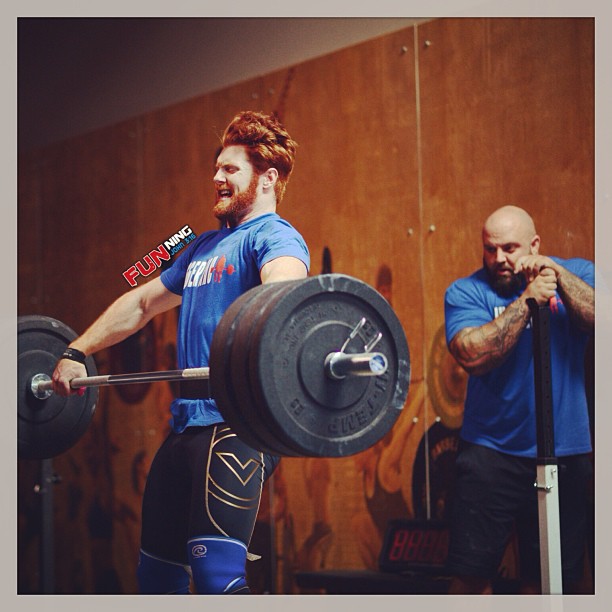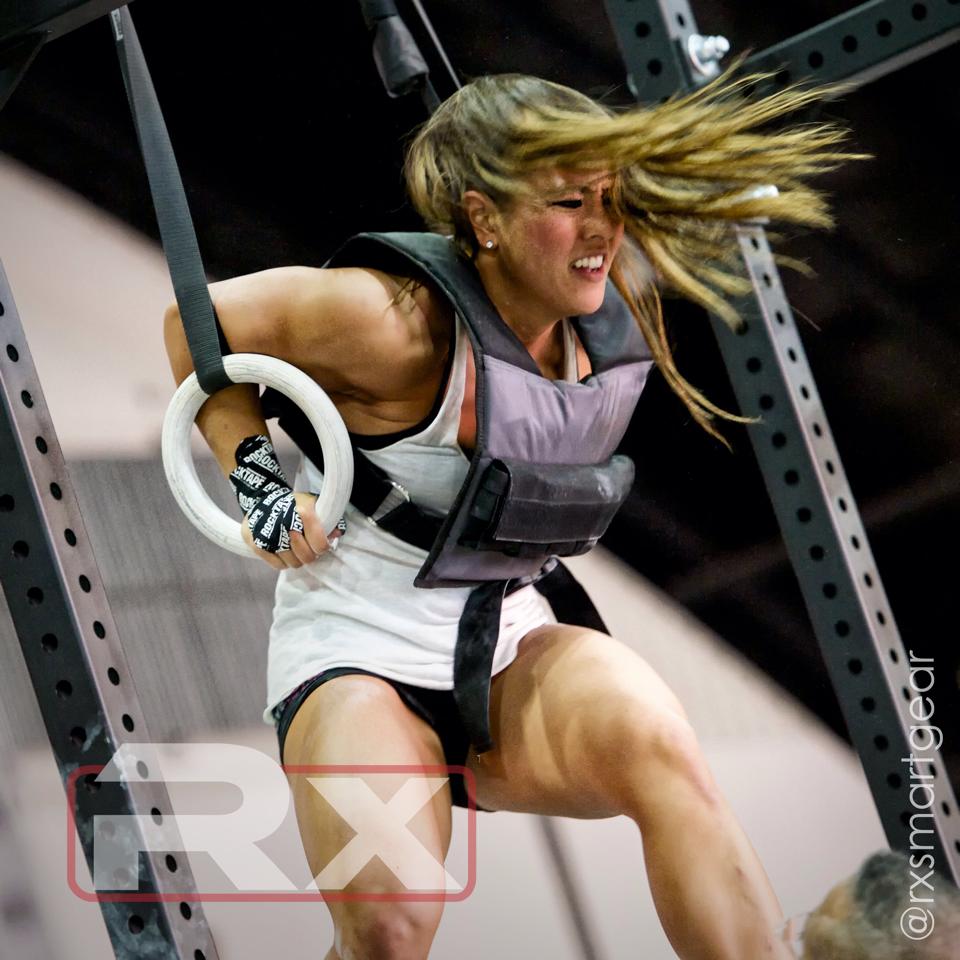Written by Jacob Tsypkin
CrossFit is an endurance sport.
I know you don’t want it to be. Hell, I don’t want it to be. Strength is cool. Cardio is…well, exercise.
But you’re the one who wants to exercise competitively, so let’s talk about cardio.
Competing at the Regionals level and beyond in CrossFit requires that an athlete be well rounded – strength, power, athleticism, muscular stamina , and aerobic capacity are all key. But the fact is, more events will require some type of endurance than won’t. Even the solitary test of maximal strength/power at the 2013 CrossFit Games – the clean & jerk ladder – required a degree of endurance, since athletes were required to perform on a 90 second clock.
It would be well beyond the scope of this article to discuss all the possible means and methods for effectively improving conditioning in CrossFit athletes. What I aim to do here is present three types of conditioning work I have found valuable with my athletes. The first is often overlooked. The second is commonly used, but rarely to it’s fullest potential. The third is often sadly ignored.
Strength AND Conditioning
For developing athletes, strength should be independently developed year round. There is no need to combine strength training with gymnastics or aerobic conditioning, except for a bit of fun once in a while.
For the athlete looking to be competitive at the Regionals level and beyond, effective combination of heavy lifting with various types of aerobic conditioning is a valuable training tool as well as crucial event practice, preparing the athlete for game type scenarios wherein they will have to handle near max loads at high heart rates.
I do not wish to suggest that all of a high level CrossFit athlete’s strength work should take these forms – even during the competition season, pure strength work is an important part of what we do. These methods are simply a way to help build strength in a way that is immediately adaptable to competitive CrossFit, as well as help accumulate total training volume and build durability.
I generally recommend pairing movements which primarily stress differing muscle groups. This serves to keep the effect aerobic and to allow the athlete to apply full intensity to both exercises.
Below are several examples of this methodology in practice. These are by no means the only way to go about this type of training.
5 sets: Back Squat 2-3 reps @ 85% 1RM, followed immediately by 20-25 chest-to-bar pullups. Rest 2 minutes between sets.
5 sets: Front Squat 4-5 reps @ 70% 1RM, rest 60 seconds, then 4-6 muscle-ups, rest 60 seconds.
5 sets: 4-5 push press @ 70% 1RM, followed immediately by 25 unbroken Kettlebell swings (Russian,) with the heaviest weight the athlete can handle. Rest 2 minutes between sets.

EMOM
Let’s get one thing straight right now: EMOM stands for “every minute on the minute,” not “electronic mom.”
Now that that common mistake has been dealt with, let’s discuss the value of this type of training.
Using every-minute-on-the-minute protocols (and the same idea with other time domains) presents three particular benefits.
Firstly, they help the athlete learn how to pace. When confined to predetermined time period, the athlete will gain an understanding, both conscious and subconscious, of how much work they can do with the given movement in that time period.
Secondly, it allows the athlete to spend time working on trouble movements in a format which keeps the focus exclusively on that exercise, while still providing a challenging stimulus.
Finally, it allows the coach to precisely control volume, intensity, and progression. This makes it easy to create an effective stressor without causing undue fatigue or soreness, as well as giving the athlete quantifiable progress when the workout is repeated with slight increases to load or volume over a training cycle.
This type of training can be monomodal or multimodal. Here are a few examples.
Every Minute for 10 Minutes: 6 dumbbell snatches, 80#/60#, alternating hands each rep
Every Minute for 12 Minutes, alternating exercises each round: a) 10 shoulder-to-overhead, 155#/105#, b) 15 kettlebell swings, 32kg/24kg
Every Minute for 10 Minutes: 3 muscle-ups/12 wall ball

EMOM work is a great tool to use in developing your conditioning and skills for maximum performance in CrossFit.
More Aerobic
I know you don’t want to run a 5k. I know you don’t want to row a 6k. I know you don’t want to sit on the damn Airdyne for 20 minutes.
But I’m not here to make you happy – I’m here to make you better. And I’m here to tell you that aerobic training makes you better at CrossFit.
Unfortunately, there’s often a sort of taboo around the subject in CrossFitLand. Many coaches and athletes avoid aerobic work, whether out of pure dislike, a genuine belief that it lacks benefit, or a desire to avoid being too much like joggers (with a soft J.)
This has led to a lacking understanding among CrossFit coaches and athletes of how to effectively program aerobic training. Below I have presented a simple and intuitive template.
There are three primary means I use for pure aerobic work: running, rowing, and the Airdyne. Swimming is also a great option for those with regular access to a pool.
For a given training cycle, I will typically use 2-3 tests each for running and rowing, and 1 on the Airdyne – running and rowing seem to respond better to frequent exposure, and are more likely to come up in competition. Some of the tests this season included:
Cooper Test (Max distance run in 12 minutes)
5k run
1600m run
2k row
5k row
10 minutes max calories on Airdyne
These means are chiefly expressed in two methods: steady state aerobic work, and aerobic intervals. In all cases, I use the testing parameters to determine the training plan.
What follows is a 6 week training cycle used in TZ Strength in early 2014.
Week 1
Run: 6x400m @ 2-4 seconds faster than 1600m pace; rest 60 seconds between efforts
Row: 3000m @ 90% of 2k pace
Airdyne: 20 minutes @ 80% of 10 minutes max cals
Week 2
Run: 20 minutes @ 80% (5k, recovery piece)
Row: 6x500m @ 2-4 seconds faster than 2k pace; rest 60 seconds between efforts
Airdyne: 12 minutes @ 95% of 10 minutes max cals
Week 3
Run: 10 minutes @ 105% of Cooper Test pace
Row: Row 6k @ 92% of 5k pace
Airdyne: 6 x 2:00 on, :60 off @ 120% of 10 minutes max cals
Week 4
Run: 4x800m @ 3-6 seconds faster than 1600m pace; rest 120 seconds between efforts
Row: 3000m @ 92% of 2k pace
Airdyne: 20 minutes @ 65% of 10 minutes max cals (recovery piece)
Week 5
Run: 24 minutes @ 90% of Cooper Test pace
Row: 4x1000m @ 3-6 seconds faster than 2k pace; rest 120 seconds between efforts
Airdyne: 11 minutes @ 100% of 10 minutes max cals
Week 6
Run: 11 minutes @ 105% of Cooper Test
Row: 20 minutes @ 80% of 5k (recovery piece)
Airdyne: 4×4:00 on, :120 off @ 110% of 10 minutes max cals
For athletes who specifically lack aerobic capacity, you can add further steady state work on the days they aren’t already doing aerobic training. Below is an example of 6 weeks of additional steady state aerobic work one of my athletes did during the training cycle above. During that training cycle, the template above was employed Monday, Wednesday, and Friday. Thus the workouts below were performed on Tuesday and Saturday as warm-ups to the rest of their training:
Week 1
Run 12 minutes @ 5k pace
Row 12 minutes @ 5k pace
Week 2
Airdyne 15 minutes @ 80% of 10 minutes max cals pace
Run 12 minutes @ 5k pace
Week 3
Row 12 minutes @ 5k pace
Airdyne 15 minutes @ 80% of 10 minutes max cals pace
Week 4
Run 14 minutes @ 5k pace
Row 14 minutes @ 5k pace
Week 5
Airdyne 17 minutes @ 80% of 10 minutes max cals pace
Run 14 minutes @ 5k pace
Week 6
Row 14 minutes @ 5k pace
Airdyne 17 minutes @ 80% of 10 minutes max cals pace
This template allowed the athlete to establish comfort, practice pace, and build durabilty with our three primary modes of pure aerobic training.
Hopefully this piece will lead you to, at the very least, be sure to include substantial amounts of conditioning year round in your training for competitive CrossFit. The last six weeks before the Open just aren’t gonna cut it.
In the next installment of this series, we will discuss adapting and adding lifting practices to suit training for the CrossFit Games.
Jacob Tsypkin is a CrossFit and weightlifting coach, and the co-owner of CrossFit Monterey and the Monterey Bay Barbell Club in Monterey, CA. Website, Facebook, YouTube, Twitter





